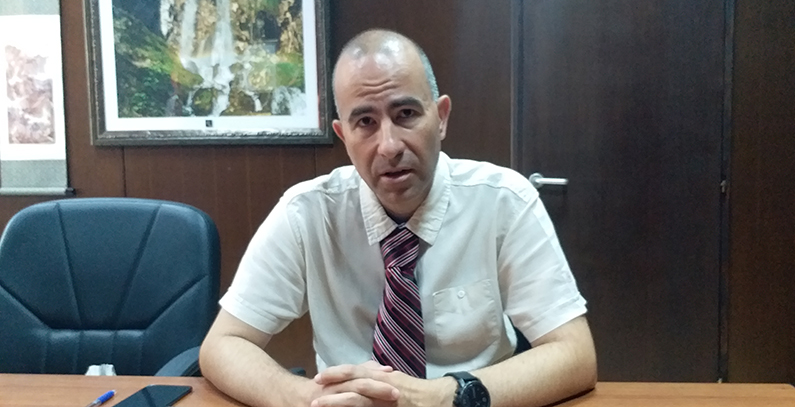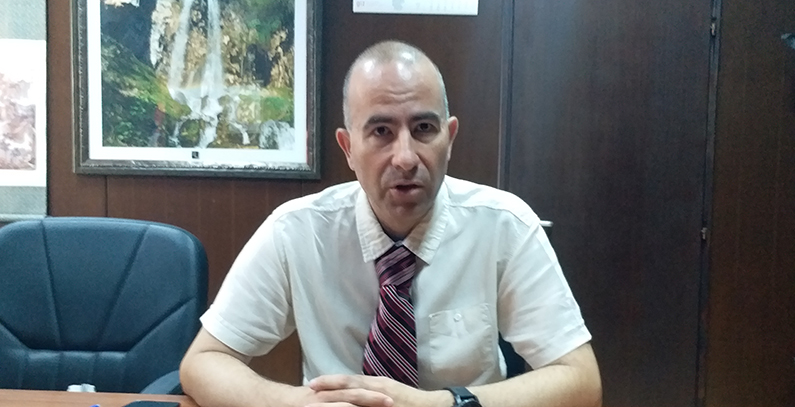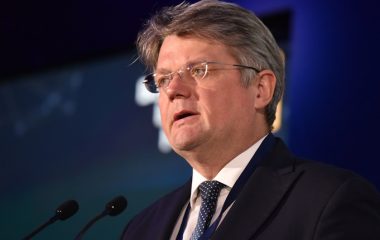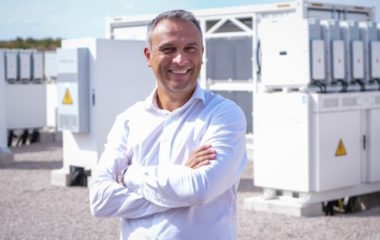
Photo: BGEN
Serbia’s new waste management strategy for 2019-2024 will mark a shift from the concept of regional sanitary landfills to the model of regional waste management centers to include waste sorting, separation, and recycling, as well as non-recyclable waste treatment, Filip Abramović, assistant environmental protection minister for waste and wastewater management, says in an interview with Balkan Green Energy News.
Aside from the new waste management strategy, he also discussed whether Serbia will introduce a deposit refund system and why the project to remediate the Vinča landfill and build a waste incinerator is good in his opinion.
The existing Waste Management Strategy refers to the period from 2010 to 2019. Which strategy goals have been achieved?
The strategy was adopted at a time when certain EU directives were in force and it envisaged a certain waste management system. Over the 10 years in question, however, both the EU directives and the systems have changed, and we have drafted a new strategy under a twinning project with EU member states Austria, Sweden, and Lithuania. The new strategy will cover a five-year period. As a result of the implementation of the existing strategy, for example, we now have 9 regional sanitary landfills.
How many were there supposed to be under the existing strategy?
A total of 27, but this number will be reduced under the new strategy, which will envisage regional landfills to be more operative. What was the problem? Local governments were allowed to decide whether they would build sanitary landfills only or immediately also put waste sorting and recycling in place, and they decided on the first option, even though it is their legal obligation to put waste sorting in place. Waste management is a utility service handled by municipalities, and they have to implement regulations, but they don’t do it, partly due to a lack of human resources and money.
This is why this Ministry of Environmental Protection, when it was formed, for the first time decided not only to prepare the strategic and legislative framework but also to help municipalities with implementation. Apart from expert assistance, we have also provided them, through donations, with vehicles, bins, and containers, while in cooperation with the Deutsche Gesellschaft für Internationale Zusammenarbeit GmbH (GIZ), we have also secured two composting facilities. Also, the Government of Serbia, at the Ministry’s proposal, adopted a decision on the joint community waste management for 40 municipalities, requiring the municipalities to transport their waste to sanitary landfills. This is creating conditions to close many landfills that are “environmental time bombs” and 22 municipalities have received funding from the ministry to produce projects to remediate and close old landfills, while two have already also received funding for works. This year, another 14 municipalities will get funding for projects, and some of them will also get funding for works.
When will the new strategy be adopted?
The draft has been completed and the ministry will submit it by the end of the year, but I cannot guarantee when it will be adopted, as this is up to the Government of Serbia. However, it will be ready in time to supersede the old strategy, so there will be no vacuum.
Which developments does the new strategy envisage?
We will change the territorial distribution of regional sanitary landfills and reduce their number, as we have noticed many problems concerning coordination between municipalities. At the same time, we have also noticed that more attention is paid to the construction of such landfills than to turning waste immediately into a resource and raw material. This means we will no longer implement the concept of regional sanitary landfills but will rather seek the development of regional waste management centers that will recycle everything that can be recycled and treat non-recyclable waste through energy recovery or composting and use residues in the construction industry.
Which solutions will be implemented in the treatment of non-recyclable waste?
Depending on waste composition and quantities, these include composting, mechanical biological treatment, anaerobic digestion, incineration, and cogeneration.

Primary and secondary waste selection and recycling rates in Serbia have been poor. Why?
There are many problems concerning waste sorting, which is the essence of primary and secondary waste selection. The problems concern human resources and finances at municipal administrations and public utility companies.
When it comes to packaging waste, which accounts for a fair share of this problem, we have started discussing, through the Serbian Chamber of Commerce (PKS), changes to the existing packaging waste management system with companies generating packaging waste.
When it comes to packaging waste, we do not wish to burden businesses, but the polluter pays principle must be upheld
Given the bad situation on the ground, the expected growth of packaging waste generation, and the EU’s recycling target of 90% for packaging waste, which Serbia will have to achieve, we will quickly face major problems. More importantly, we have to protect the environment and collect this waste so it doesn’t end up in rivers and on illegal dumpsites, as this type of waste can be used. We will shortly form a working group that will produce a new Draft Law on Packaging and Packaging Waste by the end of the year. Expert discussions are ongoing on what this solution will look like – it remains to be seen whether it will involve improvements to the system of extended producer responsibility (EPR) or the introduction of a deposit refund system, or something in between.
What is the ministry’s position?
At this moment, expert working groups are formulating the proposal. Everything has its positive and negative sides. However, we need a solution that will quickly yield results.
It’s clear that major business interests are at play, that powerful multinational companies are involved, and that there is a lot of lobbying. What guarantees that the solution to be adopted will be in the common interest?
Our sole interest is the interest of the environment and citizens. When economic interests, different ideas, and pressure meet, all sorts of things are at play…, but the point is that environmental protection and our health cost money and the polluter needs to pay, that is the key principle. We do not wish to burden businesses, but the polluter pays principle must be upheld.
The public-private partnership (PPP) for the Vinča landfill project has been much discussed, including at a recently held public consultation.
Belgrade, unlike many municipalities, waited for no one. It adopted a waste management plan and cost-effectiveness analyses and entered a PPP rather than borrowing, as the project requires an investment of EUR 334 million in construction, while operating costs will push the overall value to over EUR 1 billion.
What does the EUR 1.1 billion refer to?
Investment in the system is envisaged at EUR 334 million, while operating costs of the 25-year PPP will increase the overall value to over EUR 1 billion. In the end, the entire system will be transferred to the city’s ownership.
These operating costs will be financed through a new fee to be paid through the Infostan aggregate utility bills?
That is not a new fee – it should be viewed in light of the polluter pays principle. We are all generating waste and have so far paid around RSD 200-300 [EUR 1.70-2.55] per month for waste collection and disposal. This will now be increased – earlier estimates said by EUR 1-2 – in order to secure proper disposal of waste we generate. The fee will not finance all operating costs, only the difference between the overall investment and revenues from the project, including from the sale of electricity and heat or recycled construction waste.
Why is that a good project in your opinion?
The project has been transparent from the get-go, as the Waste Management Plan adopted in 2011 envisaged the new system. The entire PPP project was made public, adopted by the City Assembly and approved by the Commission for PPP. The consultants who handled the entire procedure were advisors with the World Bank, the International Finance Corporation (IFC)… Belgrade will get a comprehensive system, while keeping collection and transport in its own hands, thus avoiding certain scenarios seen in Italy, where waste collection services have been known to go on strike. The private partner will fully remediate the old landfill, while a new construction and demolition waste (CDW) recycling facility will also be built.
Why didn’t the city keep CDW recycling in its hands?
Because it did not have conditions in place for it, so it left it to the private partner to provide know-how and expertise. The private partner is also securing overall financing for the project. The non-recyclable waste treatment facility is also planned, and it will deliver heat to the Konjarnik and Mirijevo district heating plants, which will be able to stop using fossil fuels as a result, and electricity to state power utility Elektroprivreda Srbije (EPS). It’s a modern, rounded system which is protecting rather than polluting the environment.

What about the incinerator’s harmful emissions?
All emissions will be under the limit values envisaged by the tightest EU rules and Serbia’s legislation. The project is financed with a large number of loans, from the European Bank for Reconstruction and Development (EBRD), the European Investment Bank (EIB) – these are serious financial institutions adhering to the highest environmental protection norms.
Is this a guarantee for citizens that everything will be all right?
Suez and Itochu are serious companies and then the project was also developed under the watchful eye of the EU and financial institutions implementing the highest environmental and social impact standards. They will not finance something that’s not tip-top and will stay on top of developments.
Waste sorting and recycling are in the city’s hands. Does the city have a plan of how this will be done?
The city has introduced waste sorting bins and a number of secondary separation lines have been built – I believe it is envisaged for 12 locations to be available for citizens to bring their hazardous household waste and where the secondary separation of mixed community waste – which citizens do not dispose of at sorting bins – will take place. The city and public waste management utility Gradska Čistoća are seriously working on that system. The city will deliver 340,000 tonnes of non-recyclable waste to the private partner annually, and given that the city has so far landfilled around 750,000 tonnes annually in Vinča, including 200,000 tonnes of CDW, it will not be a problem to deliver amounts needed for the facility’s operations.
What is Belgrade’s recycling rate currently?
It is estimated at about 10%.
It is clear that there is much more waste that can be recycled, so is there a danger that by increasing the recycling rate, the city will not be able to secure the 340,000 tonnes of non-recyclable waste annually for the private partner, which would result in paying penalties?
The city has not committed to specific quantities, it has only committed to not changing the collection method, which means it will conduct separate collection and recycling of what is regulated and envisaged under the legislation and EU standards, but not more than that, so that the private partner can count on the non-recyclable portion it has determined. Assessments of quantities have been provided by the city and checked by every bidder using their methods, so the city does not guarantee quantities. I believe that the assessments were conducted with precision and that there is no possibility of not being able to secure the minimum waste needed.
The ministry has recently announced that a location is being searched for to build a hazardous waste treatment facility. What kind of facility is being planned and for what types of waste exactly?
We will never do anything against the will of the citizens. Serbia needs such a facility because EU member states will have the right from 2020 to refuse to import such waste into their territories, and Serbia is, for the most part, managing it by exporting it. Now we are working on securing a municipality’s consent for everything to be brought by such a facility.
We are working on securing a municipality’s consent for the construction of a hazardous waste treatment facility
Last year, we worked on the prevention of illegal dumping of hazardous waste and for the first time, a number of persons have been convicted for the offense. We proceeded to handle the “historic waste” of bankrupt companies. A total of 2,000 tonnes of waste was removed and most of it had to be exported, which cost us about EUR 2 million. If we had had a treatment facility, the expense would have been lower. If we had such a facility, companies generating such waste would find it easier and cheaper to dispose of it. They are currently either exporting it or illegally burying it in nature. We are also in discussions with private firms that would be interested in building such a facility, as this is the practice in the world. The 2020 budget will envisage funding to produce project documentation.









Istorijski otpad je odgovornost korisnika zemljista. Pitam se samo kako drzava kontrolise resavanje problema istorijskog otpada u privatizovanim preduzecima tipa Zorka Sabac.